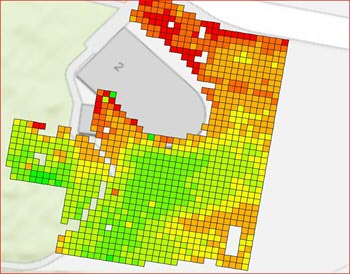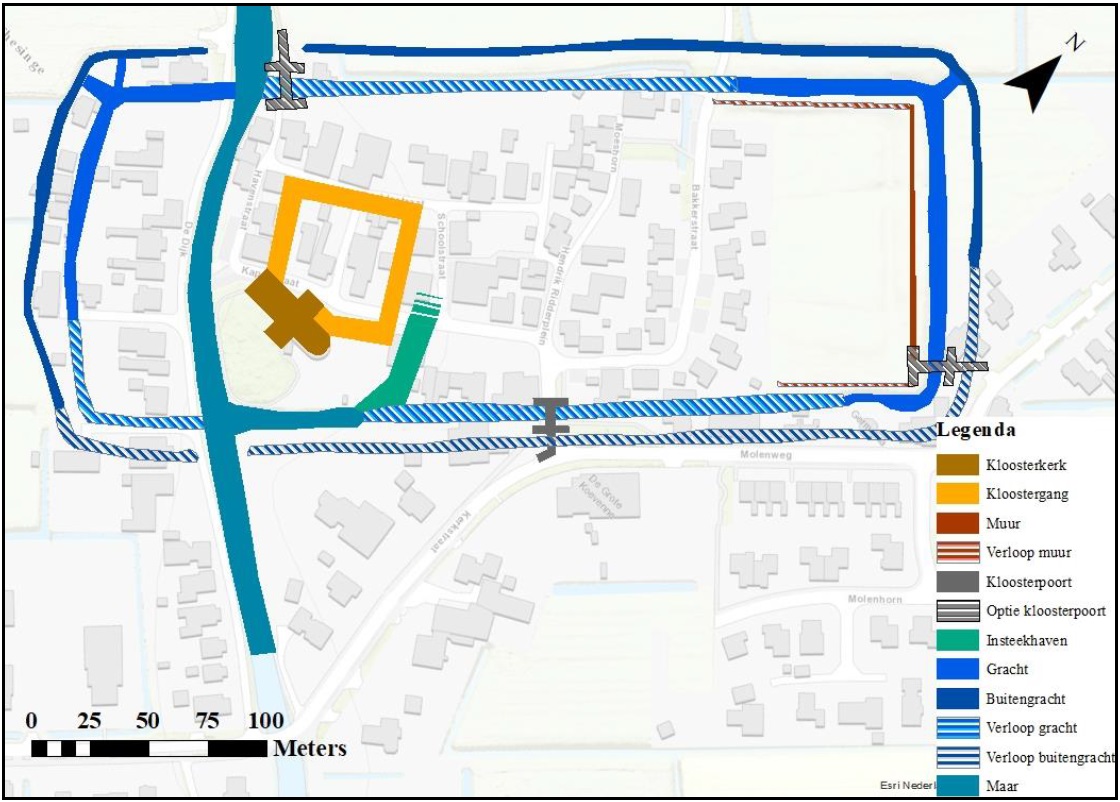Student en bewoner brengen Thesinger kloostercomplex in kaart
Een archeologiestudent van de Rijksuniversiteit Groningen heeft samen met bewoners uit Thesinge een deel van het voormalig Benedictijner klooster in het dorp in kaart gebracht. Door het meten van de relatieve weerstand in de grond heeft het team een deel van de oude kloostergang en omwalling in beeld gekregen. Het onderzoek komt voort uit de Wetenschapswinkel Taal, Cultuur en Communicatie na een vraag van de historische commissie Thesinge.
Wonen op een kloosterterrein
Wie Middeleeuws Groningen een beetje kent, weet dat er in de Ommelanden ruim 30 kloosters stonden. Zo ook in het dorp Thesinge, vlakbij Ten Boer. Bekend is dat daar bedrijvige nonnen liturgische meesterwerken afleverden en er een indrukwekkend waterafvoersysteem op nahielden. Bewoners van Thesinge voelen zich verbonden met dit verleden en worden er telkens weer aan klooster ‘Germania’ herinnerd als ze tijdens het graven in de tuin weer op sierstenen en kloostermoppen stuiten. Maar waar stond hun klooster precies? En wat maakt het typisch Benedictijns? Archeologiestudente Margreet Wieske schreef haar scriptie met deze vragen als uitgangspunt.

Weerstandsmetingen
Om het kloostercomplex op een toegankelijke en goedkope manier in kaart te krijgen, voerde Margreet onderzoek uit met een weerstandsmeter. Een weerstandsmeter is een apparaat met twee steekelektroden die in de grond gestoken worden. Door stroom door deze twee elektroden te laten lopen, meet je de relatieve weerstand. Hoe hoger de weerstand, hoe groter de kans dat er iets in de grond zit. Zo kun je dus zonder te graven een beeld krijgen van achtergebleven fundamenten en oude grachten van het kloosterterrein.
Onderzoek doen met bewoners
Margreet verrichte samen met medestudenten zo’n 2500 metingen op het terrein. Inwoners van Thesinge hielpen hen hier voortdurend mee, soms door slechts toegang te geven tot de tuin, maar vaak ook actief bij het meetwerk. Zo kon een groot deel rondom de voormalige kloosterkerk en de omwalling worden gevisualiseerd (zie afbeelding 1).
Margreet vergeleek deze data met eerder archeologisch onderzoek en met gegevens van voormalige kloosters uit de omgeving. Met enige voorzichtigheid concludeert zij dat er een deel van de kloostergang en de omwalling in het terrein terug te vinden valt (zie afbeelding 2). Ook is er een deel van het mogelijke abtshuis in kaart gebracht. Daarnaast is het klooster Germania typisch Benedictijns: bij het bouwen van het klooster werd sterk rekening gehouden met de omgeving in plaats van een strikt bouwplan, zoals later bij de Cisterciënzers wel gebruikelijk was.

Vervolg
De scriptie van Margreet is inmiddels afgerond, maar onderzoek naar het klooster gaat voort. Bewoners hebben inmiddels zelf een weerstandsmeter gebouwd en gaan zelfstandig met het onderzoek verder. Tegelijkertijd zijn er ook twee geschiedenisstudenten aan een vervolgproject begonnen.
